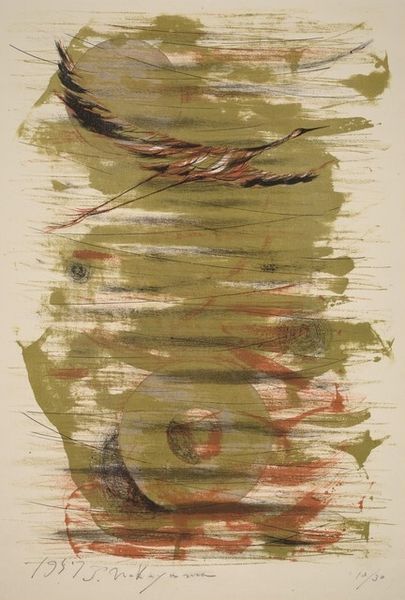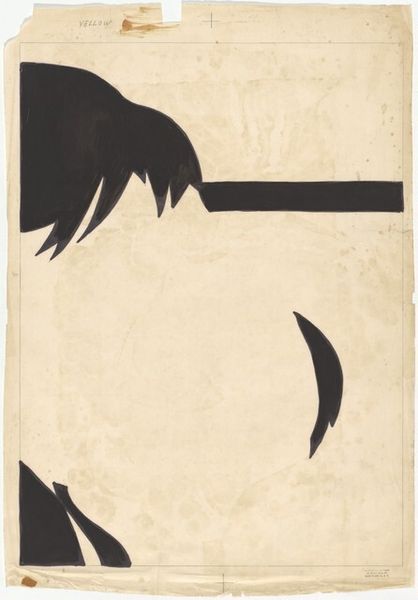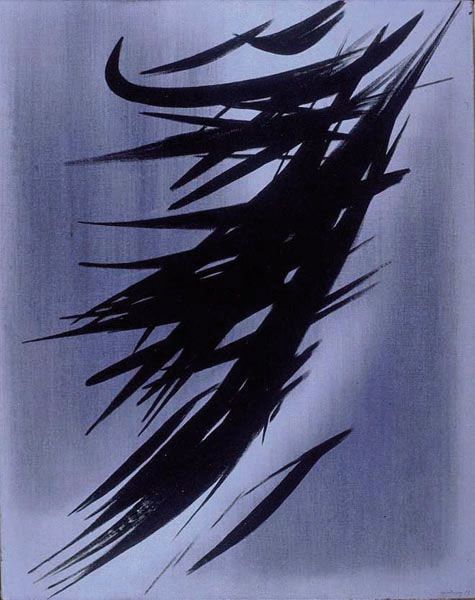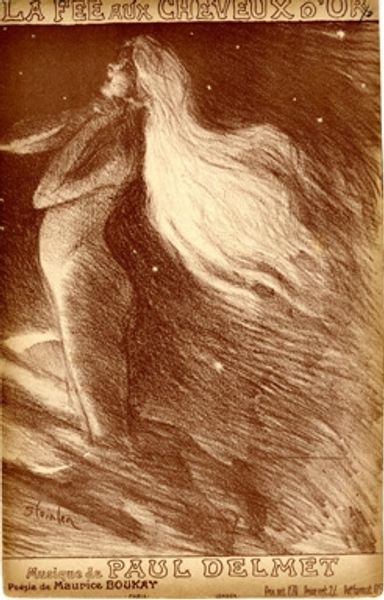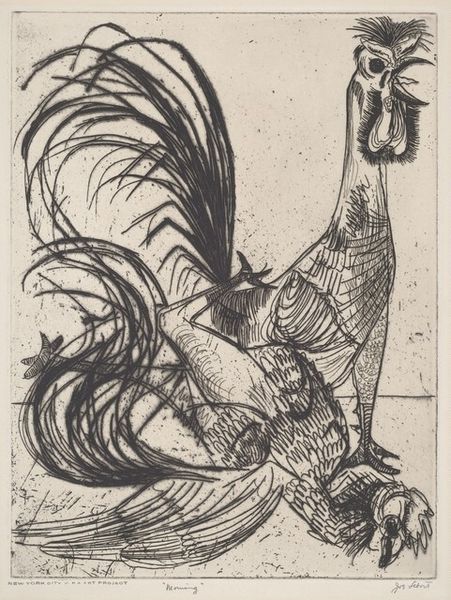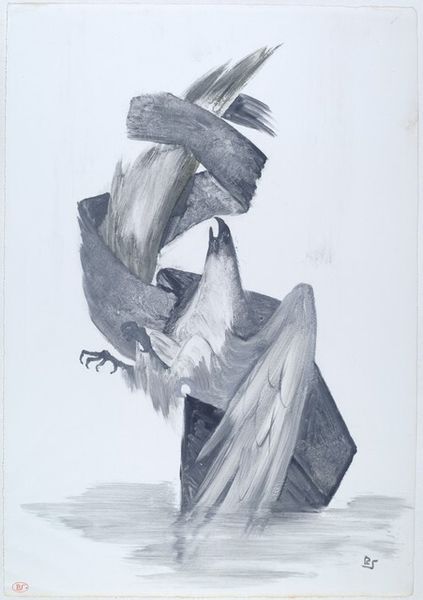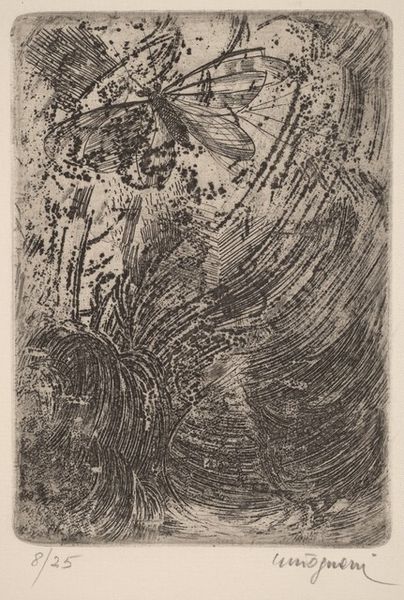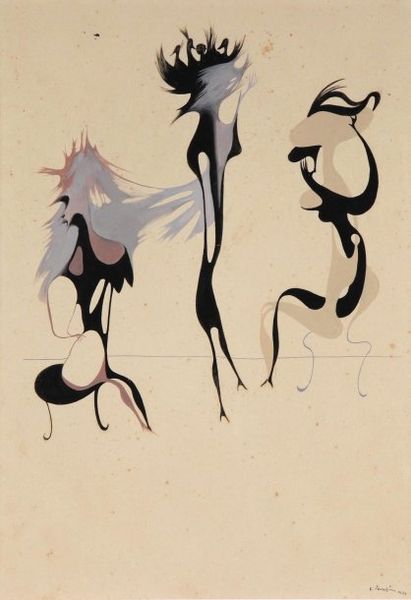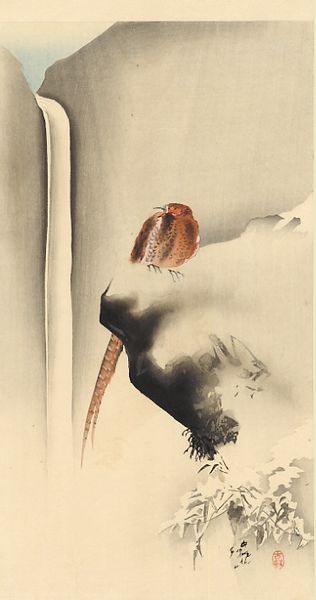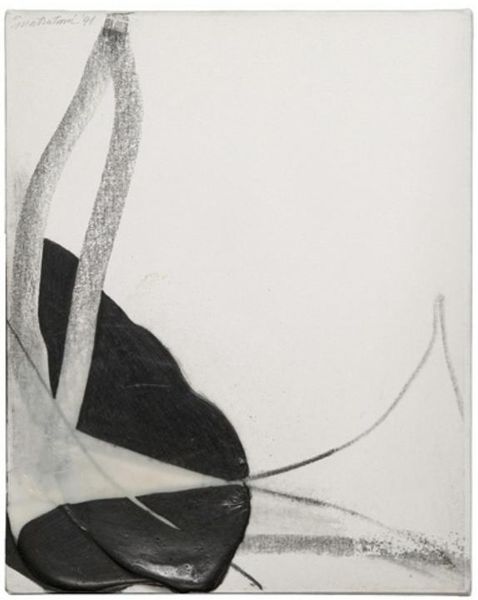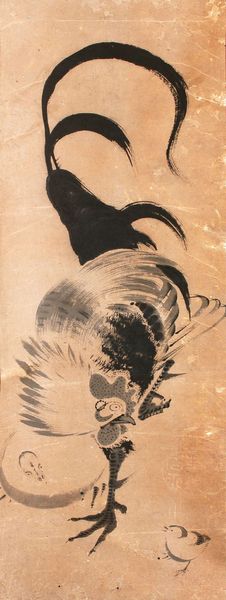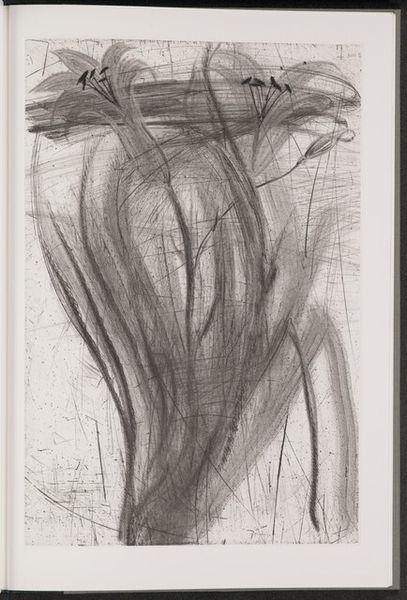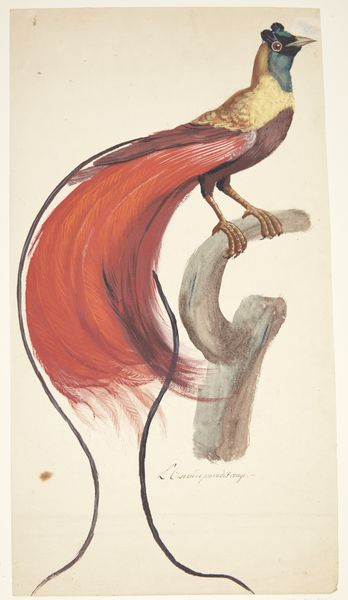
Copyright: National Gallery of Art: CC0 1.0
Editor: Tadashi Nakayama's "Crane in Agony," a 1954 print employing ink and woodcut techniques, immediately strikes me as incredibly raw. The bird seems caught in a moment of intense suffering, almost thrashing about on the paper. What feelings or ideas does this evoke in you? Curator: Oh, that's a fabulous, visceral reading! To me, it's like a haiku written in ink. You know, cranes in Japanese art often symbolize longevity and happiness, but here, Nakayama flips the script. It’s a raw, emotional outburst rendered through a restricted palette – a sort of controlled scream if you will. The background is also important – do you see how the horizontal lines almost cage the crane? Editor: Yes! That was my sense of the "agonizing" element of it: trapped energy thrashing against the edges. Why do you think Nakayama went against the usual symbolism? Curator: Perhaps he aimed to reflect on the anxieties and uncertainties of the post-war era in Japan, a departure from traditional ideals? Or maybe, just maybe, it reflects his own inner turmoil, rendered in this dramatic, expressionistic way. Editor: I never thought of it as connected to the post-war context, but now that you mention it, it definitely adds another layer of depth to the piece. Curator: Art is often a dialogue, isn't it? Between the artist, the viewer, and the world around them. It’s a puzzle where we get to bring our own pieces to the table. Editor: Exactly! This has really made me appreciate the power of subverting expectations to convey a powerful message.
Comments
No comments
Be the first to comment and join the conversation on the ultimate creative platform.
